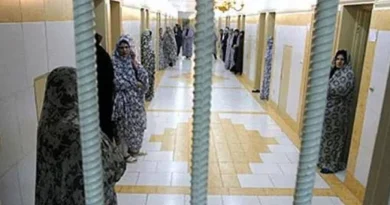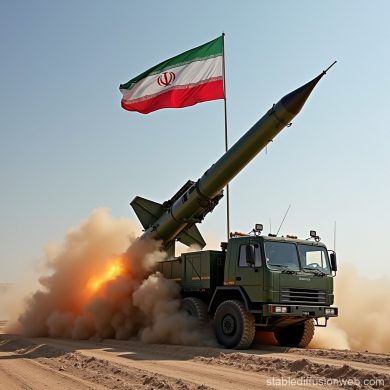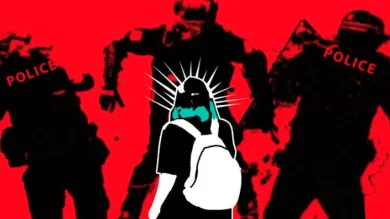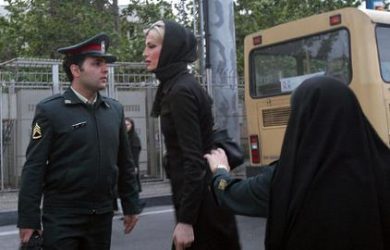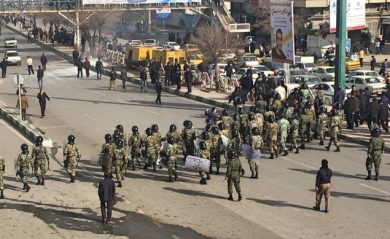The Islamic Revolutionary Guard Corps (IRGC) has evolved into a major player in cyber warfare and digital manipulation, using these tactics to suppress dissent, spread disinformation, and promote Iran’s geopolitical agenda. The IRGC leverages hacking, online surveillance, propaganda, and disinformation campaigns to maintain control over domestic opposition and influence international public perception. This article explores the cyber strategies employed by the IRGC, their impact on Iranian activists and citizens, and the global risks posed by these operations.
1. The IRGC’s Cyber Capabilities
The IRGC has developed a sophisticated cyber unit, often referred to as the Iranian Cyber Army, tasked with conducting espionage, sabotage, and digital propaganda.
A. Cyber Espionage
• The IRGC uses cyberattacks to infiltrate government institutions, private companies, and NGOs both domestically and internationally.
• Iranian cyber units have targeted critical infrastructure in countries like the United States, Saudi Arabia, and Israel.
B. Cyber Sabotage
• The IRGC has launched cyberattacks to disrupt operations in sectors such as energy, banking, and transportation.
• Notable examples include the 2012 Shamoon attack on Saudi Aramco, which disrupted one of the world’s largest oil companies.
C. Digital Surveillance
• The IRGC monitors and tracks online communications to suppress dissent.
• Activists, journalists, and minority communities are often targeted through phishing attacks and hacking of encrypted messaging apps.
2. Disinformation Campaigns
The IRGC operates extensive disinformation campaigns designed to shape public opinion, undermine opposition, and manipulate international narratives.
A. Domestic Disinformation
• The regime spreads propaganda portraying protests as foreign conspiracies and activists as agents of Western governments.
• State-controlled media outlets amplify these narratives to justify repressive measures and arrests.
B. International Influence Operations
• The IRGC uses fake social media accounts, troll farms, and state-backed media to spread misinformation abroad.
• These campaigns often promote anti-Western narratives, including false claims about sanctions and foreign interference.
C. Dividing Opposition Movements
• The IRGC spreads false information to create divisions among activists, ethnic groups, and political movements.
• By promoting sectarian and ideological differences, the regime aims to weaken solidarity among opposition groups.
3. Suppression of Digital Freedom
The IRGC plays a central role in restricting digital freedom inside Iran by enforcing internet censorship and social media bans.
A. Internet Blackouts
• During periods of mass protests, the Iranian government, led by the IRGC, implements nationwide internet shutdowns to disrupt communication and prevent the spread of protest footage.
• These blackouts isolate protesters and limit their ability to organize and gain international attention.
B. Social Media Censorship
• Platforms such as Twitter, Instagram, and Telegram are heavily monitored and often blocked by the regime.
• Activists who use VPNs or encrypted messaging services risk arrest and interrogation.
C. Targeting Digital Activists
• The IRGC’s cyber units launch targeted cyberattacks against activists, aiming to access their personal information and networks.
• Detained activists are often forced to reveal passwords and contacts under torture or coercion.
4. Impact on Iranian Society
The IRGC’s digital warfare tactics have far-reaching consequences for human rights, freedom of expression, and political activism in Iran.
A. Fear and Intimidation
• Many activists and journalists operate under constant fear of cyberattacks, surveillance, and arrest.
• This environment of fear discourages open communication and participation in political activities.
B. Information Control
• By controlling the flow of information, the IRGC prevents citizens from accessing independent news and alternative viewpoints.
• State propaganda dominates domestic media, shaping public perception to favor the regime.
C. Psychological Trauma
• Activists who have been targeted by cyberattacks and digital harassment report experiencing mental health issues, including anxiety and paranoia.
• Families of activists are often harassed online, further isolating those involved in political resistance.
5. The Global Threat of IRGC Cyber Operations
The IRGC’s cyber activities extend beyond Iran, posing a threat to global security through espionage, cybercrime, and disinformation.
A. Espionage Targeting Foreign Governments
• Iranian cyber units have been implicated in hacking campaigns targeting foreign governments, including diplomatic missions and military institutions.
• These attacks aim to gather intelligence on foreign policies, sanctions, and military operations.
B. Attacks on Critical Infrastructure
• The IRGC has conducted cyberattacks on critical infrastructure in the Middle East, Europe, and North America.
• These attacks can disrupt essential services, including energy production, transportation networks, and financial institutions.
C. Disinformation in Global Media
• Iranian-backed disinformation campaigns seek to undermine Western alliances, election processes, and human rights advocacy.
• The IRGC amplifies conspiracy theories and false narratives through fake news sites and social media bots.
6. International Responses to IRGC Cyber Activities
Countries and international organizations have taken steps to counter the IRGC’s cyber operations.
A. Sanctions and Diplomatic Pressure
• The United States, European Union, and other countries have imposed cyber-related sanctions on the IRGC and its affiliates.
• These sanctions target individuals and entities involved in cyberattacks and disinformation campaigns.
B. Cybersecurity Partnerships
• Countries have strengthened cybersecurity alliances to share intelligence on Iranian cyber threats.
• Collaborative efforts focus on protecting critical infrastructure and improving cyber defense capabilities.
C. Counter-Disinformation Efforts
• Governments and tech companies are working to detect and remove disinformation campaigns linked to the IRGC.
• Initiatives to promote media literacy aim to reduce the impact of propaganda on public opinion.
7. Strengthening Digital Resistance
Despite the IRGC’s control over digital spaces, Iranian activists continue to resist through secure communication tools and global advocacy.
A. Use of Encrypted Platforms
• Activists rely on encrypted messaging apps like Signal and Telegram to organize protests and share information securely.
• Digital security training programs help activists protect themselves from cyberattacks.
B. Global Solidarity
• International organizations provide resources and support to Iranian activists, including VPN access and secure communication channels.
• Diaspora communities play a crucial role in amplifying the voices of those fighting for digital freedom.
8. Recommendations for Countering IRGC Cyber Threats
A. Expanding Sanctions on Cyber Units
• Sanctions should target cyber operations and front companies involved in digital repression and disinformation.
B. Supporting Independent Media
• Funding for independent Persian-language media can help counter the IRGC’s propaganda and provide accurate information to the public.
C. Enhancing Cyber Defense
• Strengthening international cybersecurity cooperation is essential to prevent attacks on critical infrastructure and disrupt disinformation networks.
Conclusion
The IRGC’s cyber warfare and disinformation tactics are key components of its strategy to maintain domestic control and expand international influence. By suppressing digital freedom and spreading propaganda, the IRGC undermines both human rights and global security.A coordinated response involving sanctions, cybersecurity initiatives, and support for digital activists is crucial to counter these threats.
Join Our Newsletter!
Stay informed with the latest updates, news, and ways to take action in the fight for justice and global security. Sign up now to get updates delivered straight to your inbox!

